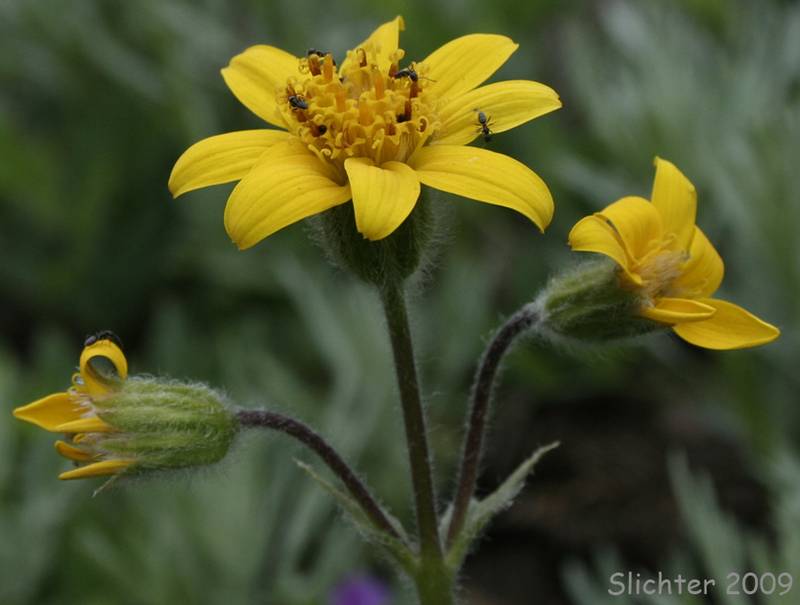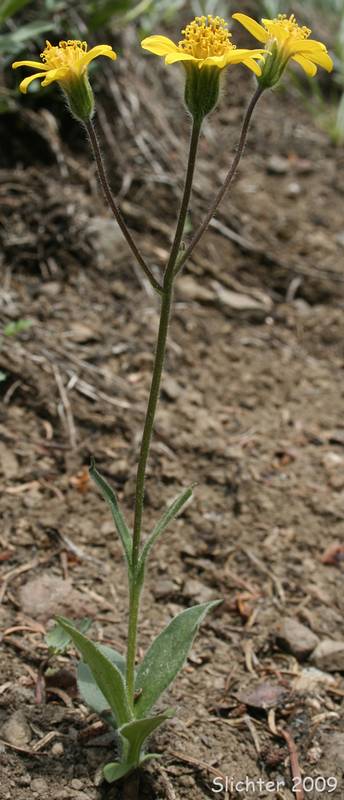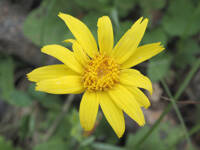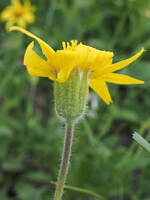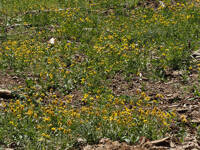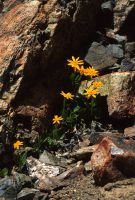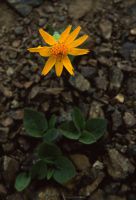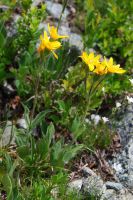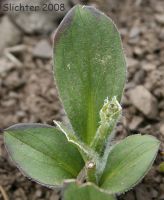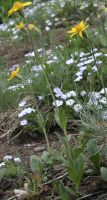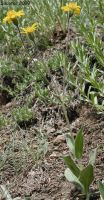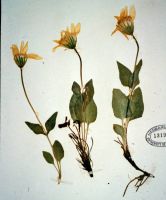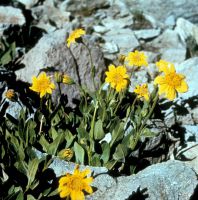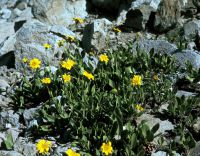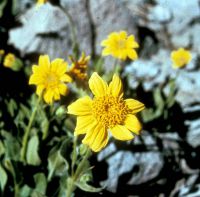Distribution: Occurring in the Cascades and Olympic mountains in Washington; Washington to California, east to Nevada.
Habitat: Open, rocky slopes and forest openings in the subalpine and alpine.
Flowers: June-August
Origin: Native
Growth Duration: Perennial
Conservation Status: Not of concern
Pollination: Apomixis, bumblebees, butterflies
Perennial from long, naked, branched rhizomes, 1-3 dm. tall, glandular throughout, the stems often solitary.
Cauline leaves 2-3 pairs, the lower larger and petiolate, the blade broadly ovate with rounded to sub-cordate base, 3-7 cm. long and 2-4 cm. wide; the long-petiolate basal leaves, similar to the lower leaves, often on separate short shoots.
Heads 1-3; involucre 10-15 mm. high, densely covered with short-stalked glands; pappus white to straw-colored, strongly barbellate.
Achenes uniformly glandular or short hairy or both.
The similar Arnica cordifolia has copius long, white hairs on the involucre, while A. nevadensis is only glandular; also, A. nevadensis has entire leaves, while A. cordifolia usually has toothed leaves.
Publication: Proc. Amer. Acad. Arts. 19: 55. 1883.
PNW Herbaria: Specimen records of Arnica nevadensis in the Consortium of Pacific Northwest Herbaria database
WA Flora Checklist: Arnica nevadensis checklist entry
OregonFlora: Arnica nevadensis information
E-Flora BC: Arnica nevadensis atlas page
CalPhotos: Arnica nevadensis photos

